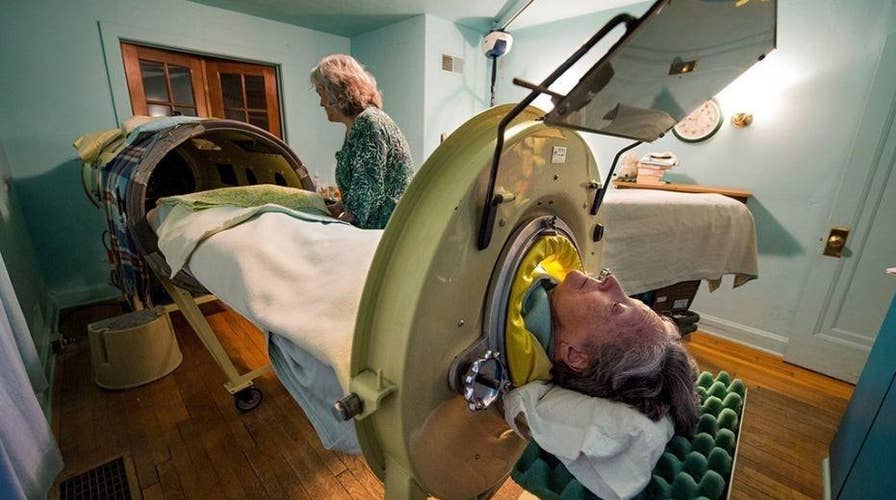Polio survivor uses one of only three ‘iron lungs’ still in use
82-year-old polio survivor Mona Randolph uses one of only three “iron lungs” known to still be in use in the U.S. The iron lung, which was invented in 1920s, was often used on polio patients who were unable to breathe after the virus paralyzed muscle groups in the chest. Six nights a week, Randolph sleeps up to her neck in a noisy, airtight, 75-year-old iron tube.
For over 35 years, a Missouri woman has enlisted her husband and a kind friend to help her go through the hourlong process of climbing into what is believed to be one of the last remaining iron lungs still functioning today. Mona Randolph, now 82, was struck by polio as an adult in 1956, and relies on the 75-year-old machine to live six nights per week, The Kansas City Star reported.
Randolph, who has no function in her left arm and limited use of her right arm, uses a CPAP during the day, but said the machine forces air unnaturally into her lungs, and she prefers the methods of the 700-pound machine instead.
Randolph, a former piano player who met her husband at church in the 80s, when her post-polio symptoms had set in, said the first sign of polio was a strange headache while on a bus trip home. She was 20 years old.
COLORADO BOY BATTLING STAGE-4 CANCER CELEBRATES END OF CHEMO AS HONORARY POLICE OFFICER
“Everything was off-key,” she told the news outlet. “I couldn’t stand to hear people talking in the kitchen. They’d whisper and it would hurt my ears. I couldn’t stand any light. Mom put blankets over the windows.”
Her symptoms worsened on the third day and she was struggling to breathe, prompting doctors at St. Luke’s Hospital to place her in an iron lung.
“They happened to have one in the basement because people were not using them much then,” she told The Kansas City Star.
The iron lung, which was invented in the 1920s, was often used on polio patients who were unable to breathe after the virus paralyzed muscle groups in the chest. Polio, a crippling and potentially deadly disease, spreads from person to-person and can infect a patient’s brain and spinal cord, causing paralysis. According to the Centers for Disease Control and Prevention (CDC), almost all children who get the recommended doses of vaccine will be protected from polio, which has helped keep the U.S. polio-free since 1979.
However, before the vaccine’s introduction, polio outbreaks crippled an average of 35,000 people per year in the U.S. in the late 1940s to early 1950s. According to the CDC, public health officials imposed quarantines, and parents were frightened to let their children go outside. When Randolph was diagnosed in 1956, the vaccine was largely made available to children but adults were thought to be at low risk of transmission.
BABY BOOM AHEAD? ARIZONA HOSPITAL HAS 16 PREGNANT NURSES
The iron lung was used on patients for a few weeks before they were able to recover and either breathe on their own, or with the use of assistive respirators. The patient’s head is the only part of the body visible once the machine is closed, and the neck collar is adjusted to keep it airtight.
Randolph, who was able to live without the iron lung until her symptoms worsened in the late 70s, cannot climb into the machine by herself, and has to be put in her pajamas by husband Mark, and then loaded into a sling that hoists her from her bed over to the machine, The Kansas City Star reported. Then someone has to adjust her blankets to ensure she is not cold, and turn on the machine before the process is repeated in reverse the following morning.
If a piece of the machine malfunctions, Mark, a software engineer, or her cousin, a former aircraft mechanic, work on the repairs, Gizmodo reported. Mark told the news outlet that running the machine and associated repairs cost about the same as buying a new car each year.
“The ‘yellow submarine’ is my necessary trusted, mechanical friend,” she previously told Gizmodo. “I approach it with relief in store at night and thankfully leave it with relief in the morning.”

